Excavation Contractors Alsip
Best Land Excavation in Alsip
Get up to 3 Excavation Services quotes for your project today! Compare profiles, reviews, accreditations, portfolio, etc... and choose the best service.
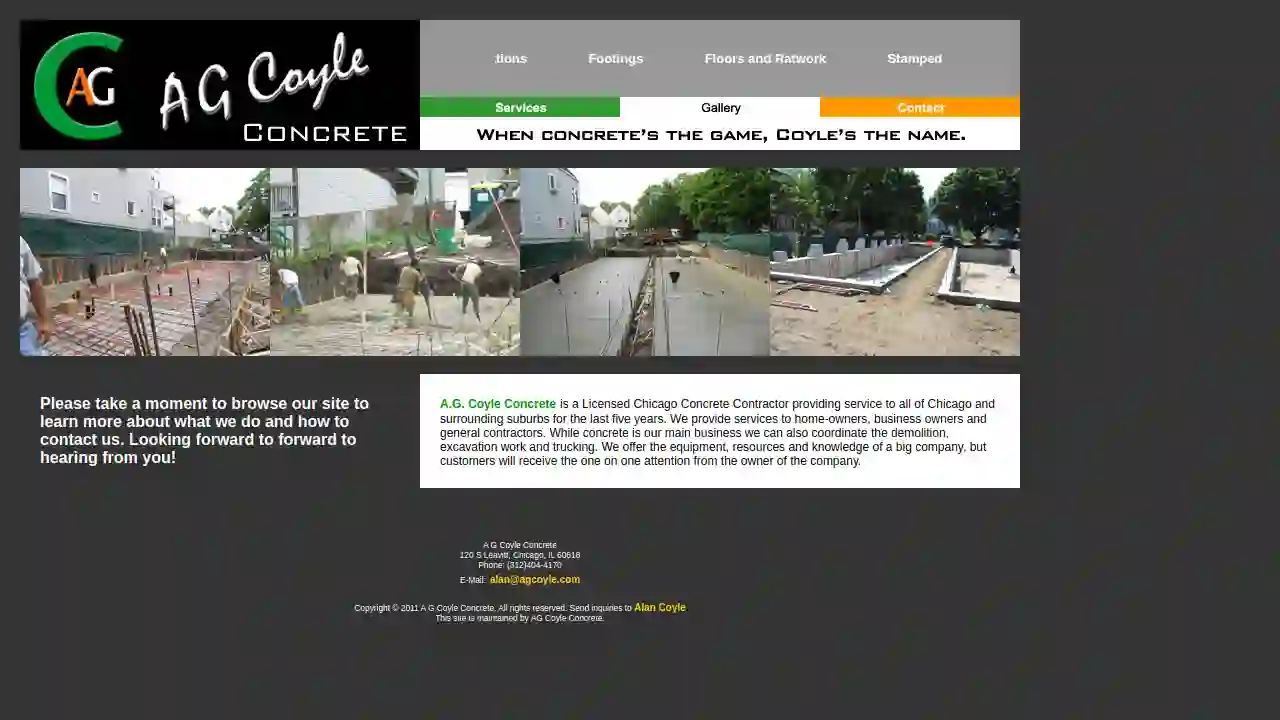
AG Coyle Concrete
120 S Leavitt, Chicago, 60618, USA.G. Coyle Concrete: Your Trusted Chicago Concrete Contractor A.G. Coyle Concrete is a licensed and experienced Chicago concrete contractor serving the city and its surrounding suburbs for the past five years. We are dedicated to providing top-notch concrete services to homeowners, business owners, and general contractors alike. While concrete is our core expertise, we also offer a comprehensive range of services, including demolition, excavation, and trucking. We bring the resources and knowledge of a larger company, but with the personalized attention you'd expect from a family-owned business.
- Services
- Why Us?
- Gallery
Get Quote
J.G Gagnon & Son's Excavation L.L.C
44 reviewsEpping, New Hampshire, United States, USJ.G. GAGNON & SON’S EXCAVATION L.L.C. We take pride in all the jobs we do. With 30 years of experience and pristine work ethics, we give every customer and job 200%. We have a passion, not only for the excavation work itself but, for our customers and their satisfaction! We treat and tackle every job as if it was our own. We take extreme pride in our finished product, always leaving our customers completely satisfied. We’re a small business located in Southern NH and offer services in -
- Services
- Why Us?
- Gallery
Get Quote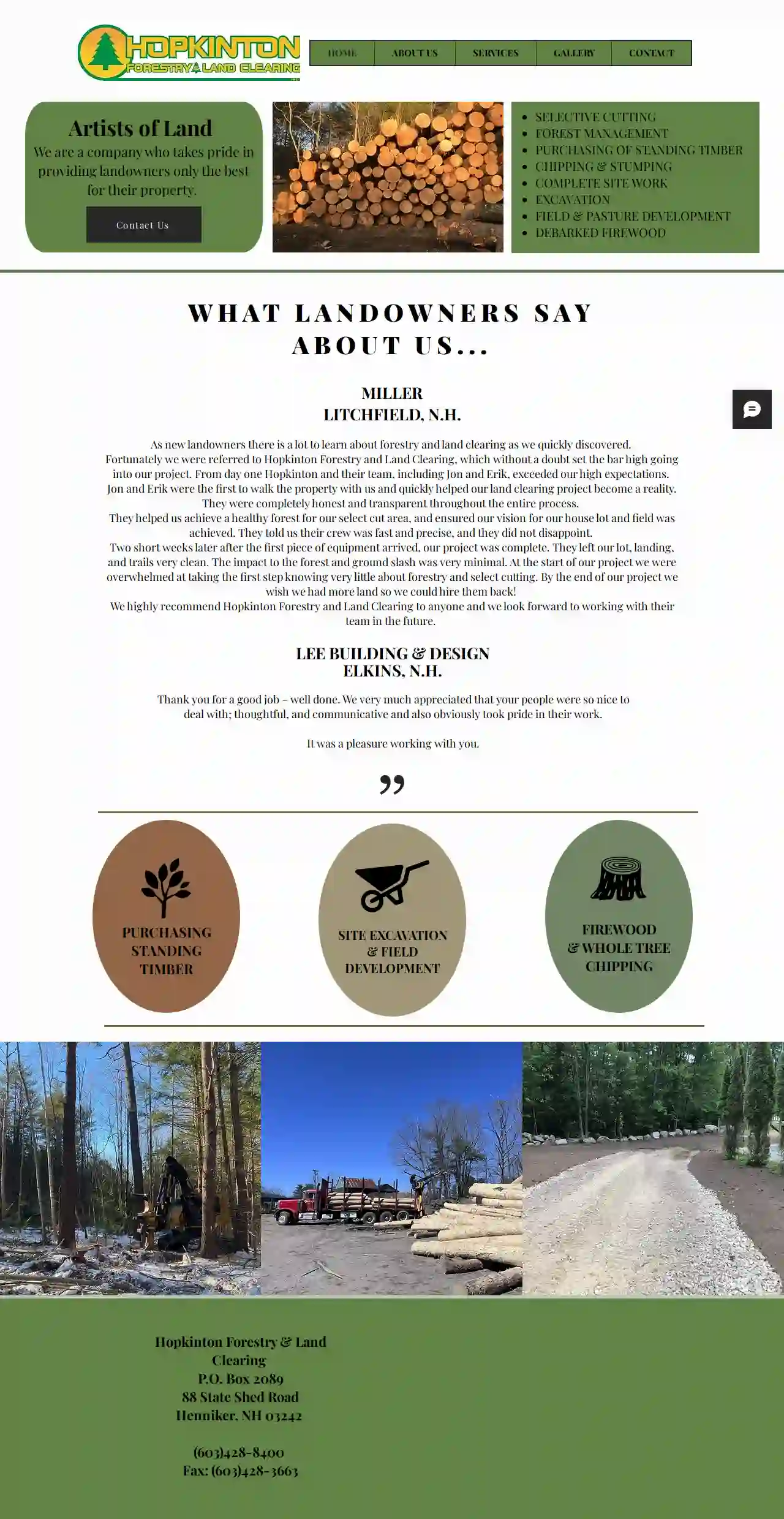
Hopkinton Forestry & Land Clr
52 reviewsP.O. Box 2089, 88 State Shed Road, Henniker, 03242, USArtists of Land We are a company who takes pride in providing landowners only the best for their property. As new landowners there is a lot to learn about forestry and land clearing as we quickly discovered. Fortunately we were referred to Hopkinton Forestry and Land Clearing, which without a doubt set the bar high going into our project. From day one Hopkinton and their team, including Jon and Erik, exceeded our high expectations. Jon and Erik were the first to walk the property with us and quickly helped our land clearing project become a reality. They were completely honest and transparent throughout the entire process. They helped us achieve a healthy forest for our select cut area, and ensured our vision for our house lot and field was achieved. They told us their crew was fast and precise, and they did not disappoint. Two short weeks later after the first piece of equipment arrived, our project was complete. They left our lot, landing, and trails very clean. The impact to the forest and ground slash was very minimal. At the start of our project we were overwhelmed at taking the first step knowing very little about forestry and select cutting. By the end of our project we wish we had more land so we could hire them back! We highly recommend Hopkinton Forestry and Land Clearing to anyone and we look forward to working with their team in the future. Thank you for a good job – well done. We very much appreciated that your people were so nice to deal with; thoughtful, and communicative and also obviously took pride in their work. It was a pleasure working with you.
- Services
- Why Us?
- Testimonials
- Gallery
Get Quote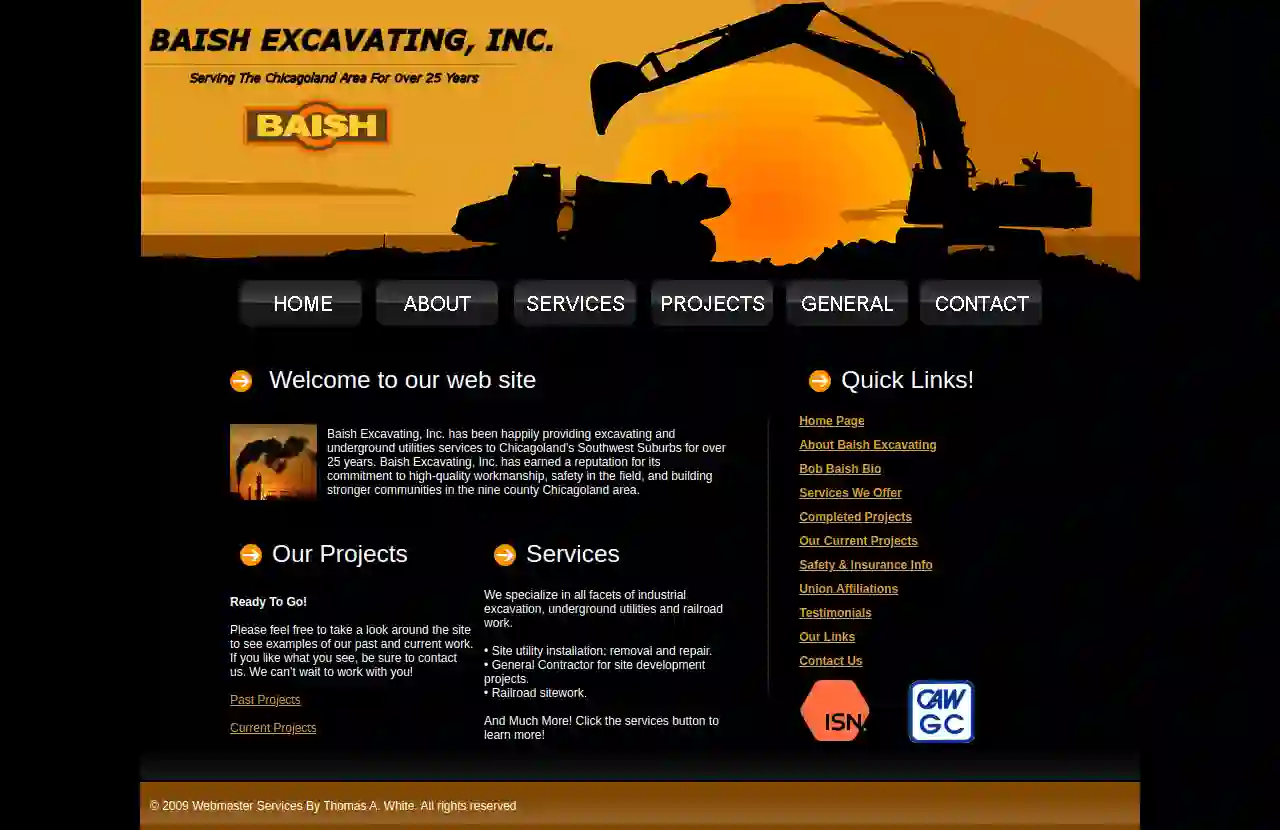
Baish Excavating, Inc.
3485-B Rt 126, Oswego, 60543, USBaish Excavating: Building Stronger Communities For over 30 years, Baish Excavating, Inc. has been a trusted name in Will County, Grundy County, and surrounding communities. A member of the Contractor's Association of Will and Grundy Counties since 1991, Baish Excavating, Inc. contributes to projects that build businesses, renovate the land and benefit the local economy. In 1985, Bob Baish founded Baish Excavating because he saw the need for high-quality excavating and underground utilities services in his community � an area that had the potential for immense residential and industrial growth. With that vision in mind, he rented a shop on Plainfield-Naperville Road in Plainfield, Illinois with a modest crew of three men (one of which was Bob�s dad, Art) and four machines. Today, the shop has upgraded in size and houses 35 pieces of machinery. The crew and staff has expanded along with the size of the workload, but the same old work ethic applies: Baish Excavating, Inc. is committed to building stronger local communities, one job at a time.
- Services
- Why Us?
- Our Team
- Testimonials
- Gallery
Get Quote
Quality Excavation Inc
54 reviewsChicago, USQuality Excavation: Your Trusted Chicagoland Excavation Partner Quality Excavation is a full-service excavation contractor serving Chicagoland for over 25 years. We're dedicated to providing our clients with the highest level of personalized service and professionalism. Our highly skilled team is committed to building lasting relationships by delivering exceptional work on time and within budget. We prioritize safety, efficiency, and customer satisfaction. We're proud of our strong affiliations and good standing with the International Union of Operating Engineers and the Construction and General Laborers Union over the past two decades. We look forward to building a mutually beneficial partnership with you. Contact us today for a free estimate on your next project!
- Services
- Why Us?
Get Quote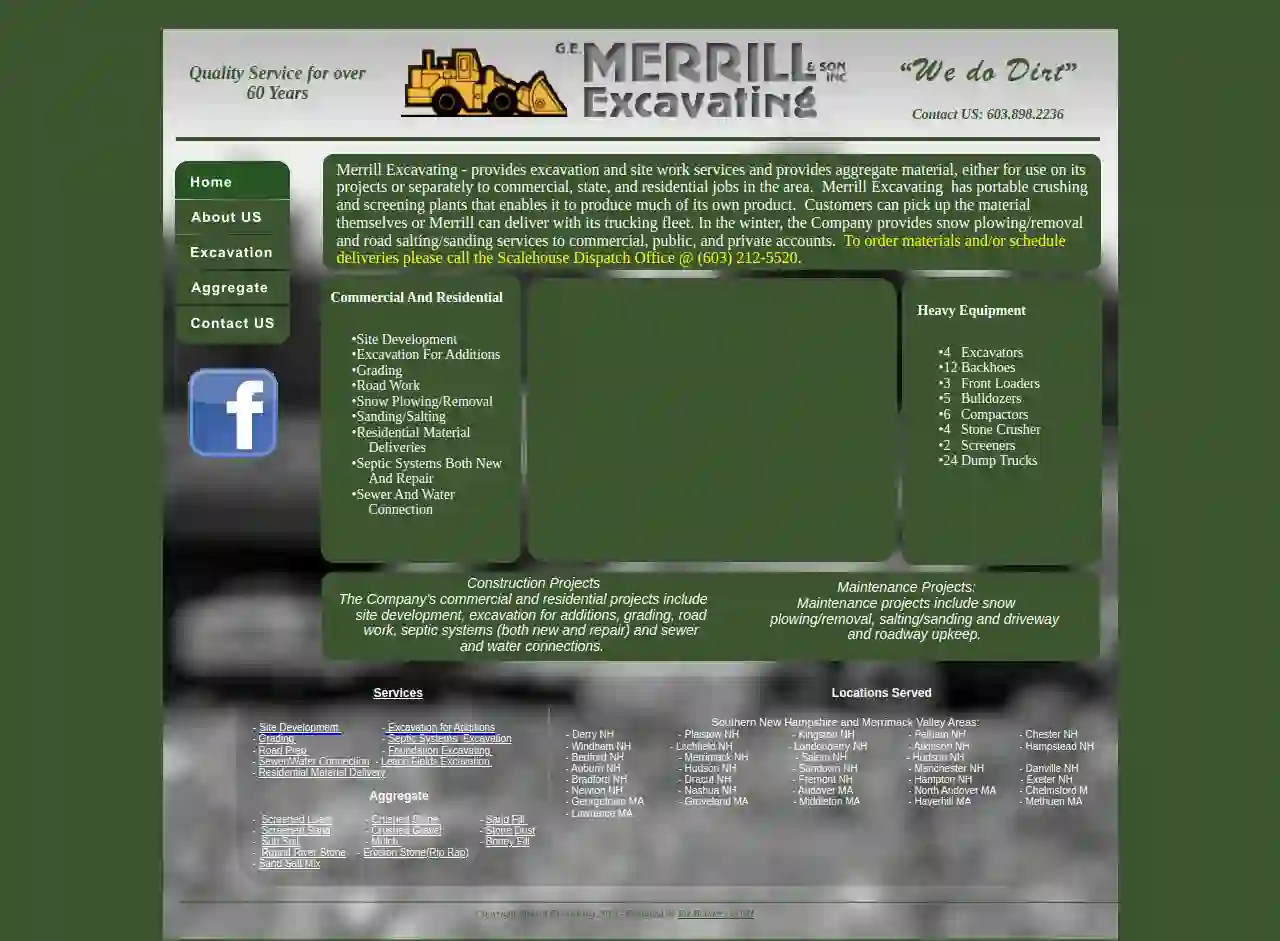
Merrill Excavating
425 reviews38 School Street, Salem, 03079, USMerrill Excavating - Quality Since 1953! Over the past 60 years Merrill Excavating has evolved with the needs of our community and its people. Our commitment keeps our business both a leader and trusted name in our local community. History George E. Merrill founded the company in 1953 with humble beginnings - one tractor and one employee. Under his direction and determined efforts, the company would grow to become an essential member of the local construction community. In 1980, his son George D. took over the company and started to expand its products and services to meet the changing needs of its growing community and customer base. Since George D. Merrill's retirement, his sons Gary and Jonathan have run the company, which now has over 45 employees and a large inventory of equipment suited to any job, large or small. The company also has a sand and gravel pit located in Salem, NH. To order materials and/or schedule deliveries please call the Scalehouse Dispatch Office @ (603) 212-5520.
- Services
- Why Us?
- Gallery
Get Quote
BMB Excavation LLC
44 reviewsNorthwood, USBMB Excavation LLC BMB Excavation LLC is a fully insured, professional company with years of experience, located in Northwood NH. We specialize in a wide variety of services in residential and commercial work, such as septic system, foundation, sewer, water, drains, utilities, and excavation. We work hard with homeowners and contractors to meet deadlines on all projects and tasks, we strive on getting passed challenging obstacles to insure the same vision or goals. Our mission is to provide quality service to customers and contractors and build professional relationship to obtain same vision, plan, and goal.
- Services
- Why Us?
- Testimonials
- Gallery
Get Quote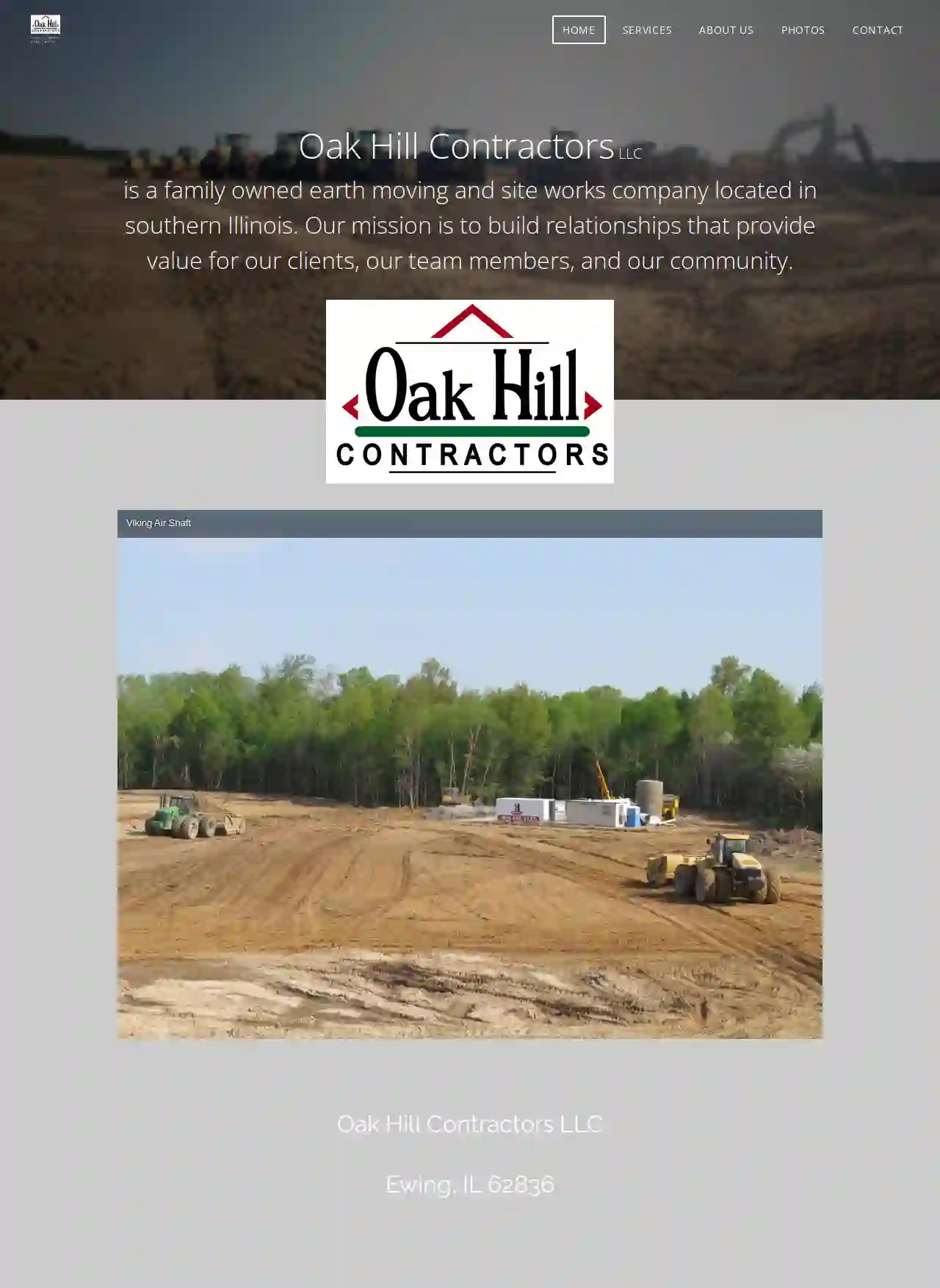
Oak Hill Contractors LLC
53 reviews20245 Ewing Road, Ewing, 62836, USAbout Oak Hill Contractors LLC Oak Hill Contractors LLC is a family-owned earth moving and site works company based in southern Illinois. We are dedicated to building strong relationships with our clients, team members, and the community, ensuring value for everyone involved. Our commitment to quality work and a wide range of equipment allows us to handle projects of all sizes. We utilize GPS-equipped machines for efficient and accurate grading work, ensuring precision and timely completion. We are proud to be Prequalified by IDOT and have MSHA-trained personnel. We are also fully insured, providing peace of mind to our clients. Take a look at one of our recent projects: Sugar Camp Refuse Expansion.
- Services
- Why Us?
- Gallery
Get Quote
Hank's Excavating & Landscaping Inc
315 reviews5825 W. State Rt. 161, Belleville, 62223, USMore than just Excavating & Landscaping. At HANK’S, we pride ourselves on being more than just the boots on the ground. We are your partner when you need us. With hundreds of years of combined experience, we can provide you with the insight you need to make informed decisions so that you end up with permanent solutions that will last for years to come. Since 1978, our goal has been to provide you: the best in QUALITY with our highly skilled workforce; the best in SAFETY, by protecting our employees, you, and your property; the best in SERVICE, by being here for you then, now and in the future. Building the project is only one aspect of what we do Since 1978, our goal has been to provide you: the best in QUALITY with our highly skilled workforce; the best in SAFETY, by protecting our employees, you, and your property; the best in SERVICE, by being here for you then, now and in the future. Awards earned over the years Over the years HANK’S has earned multiple awards and recognition from various entities and organizations. These awards include multiple Certificates of Merit and Commendations for Outstanding Service from the Illinois Department of Transportation and local municipalities. HANK’S has also received multiple Safety Awards from the Southern Illinois Builders Association. Most recently, HANK’S was awarded the 2019 Outstanding Subcontractor of the Year award from the Illinois Department of Transportation and the 2019 Business Excellence Award presented by The Greater Belleville Chamber of Commerce.
- Services
- Why Us?
- Gallery
Get Quote
The Chicago Excavation Company
512 reviewsChicago, USWelcome to The Chicago Excavating Company We take great pride in pioneering excellence in excavation services. With a steadfast commitment to quality, safety, and client satisfaction, we have emerged as a leading excavating company in Chicago, Illinois. Our journey of over two decades has been marked by innovation, a highly skilled workforce, and state-of-the-art equipment, making us the go-to choice for a wide range of excavation and site preparation needs. As we share our story with you, we invite you to explore the core values that drive us, the comprehensive services we offer, and our unwavering dedication to delivering outstanding results. Our Foundation and Values From the outset, we embraced a set of core values that became the guiding principles of our company: 1. **Integrity:** We operate with utmost honesty and integrity, building trust with our clients, partners, and employees. 2. **Excellence:** Striving for excellence is at the heart of everything we do. We are committed to delivering top-quality workmanship that exceeds expectations. 3. **Safety:** The safety of our team members and clients is of paramount importance. We uphold rigorous safety standards and invest in continuous training to prevent accidents and create a secure work environment. 4. **Innovation:** Embracing innovation is key to our success. We continuously explore new technologies and techniques to improve our services and efficiency. 5. **Client-Centric Approach:** Our clients are at the center of our operations. We listen to their needs, collaborate closely, and tailor our services to meet their specific requirements. Comprehensive Excavation Services At The Chicago Excavating Company, we offer a comprehensive suite of excavation services designed to address the diverse needs of our clients. From small-scale residential projects to large commercial ventures, we have the expertise and resources to handle projects of varying complexities. Our services include: 1. **Site Preparation:** Our site preparation services set the stage for successful construction projects. We clear debris, grade the land, and prepare the site for the construction process. 2. **Earthmoving:** With our modern fleet of excavators and bulldozers, we efficiently move earth to create the desired landscape for construction. 3. **Land Clearing:** Our land clearing services ensure that your site is free from overgrowth, obstacles, and debris, allowing for a clean canvas to begin construction. 4. **Grading:** Precise grading is essential for proper drainage and a level foundation. Our skilled operators use advanced grading equipment to ensure that your site is properly graded for optimal construction.
- Services
- Why Us?
- Gallery
Get Quote
Over 22,076+ Excavation Companies on our platform
Our excavation contractors operate in Alsip & surrounding areas!
ExcavationHQ has curated and vetted Top Excavation Pros near Alsip. Find the most reliable contractor today.
Frequently Asked Questions About Excavation Contractors
- Sloped Property: Your property has a significant slope, making it prone to soil erosion or landslides.
- Creating Usable Space: You want to level off a sloped area to create a flat surface for patios, gardens, or other outdoor spaces.
- Preventing Damage: Erosion is threatening existing structures, driveways, or walkways.
- Landscaping Features: You're incorporating tiered gardens, raised beds, or other landscaping elements requiring soil retention.
- Clear the Area: Remove any obstacles, including vehicles, outdoor furniture, landscaping features, or structures, from the excavation zone and surrounding area.
- Mark Existing Features: Identify and mark underground utilities, septic tanks, sprinkler systems, or other buried elements you want to protect.
- Protect Landscaping: Use tarps or fencing to shield trees, shrubs, gardens, or other landscaping elements from damage.
- Provide Access: Ensure the excavation contractor has clear access to the work area, including gates wide enough for equipment.
- Discuss Logistics: Coordinate with the contractor regarding parking arrangements, material delivery, and any special instructions or concerns you might have.
- Spring and Fall: Often considered favorable due to moderate temperatures and drier soil conditions.
- Summer: Can be suitable, but hot weather can make working conditions challenging and might require additional measures (shade, hydration) for workers.
- Winter: Excavation in winter can be more difficult due to frozen ground, snow, and potential delays caused by inclement weather. It might also require specialized equipment or techniques.
- Excavations Deeper Than a Certain Depth: This varies by jurisdiction, usually around 5 feet.
- Excavations Near Utilities: Digging near buried utilities (gas, water, electric) often requires permits and utility locates to prevent damage.
- Excavations Affecting Public Property: Projects impacting sidewalks, roads, or other public areas typically require permits.
- Excavations in Environmentally Sensitive Areas: Projects in wetlands, floodplains, or other sensitive areas might need special permits.
How do I know if I need a retaining wall?
How do I prepare my property for excavation?
What is the best time of year for excavation?
Do I need a permit for excavation?
How do I know if I need a retaining wall?
- Sloped Property: Your property has a significant slope, making it prone to soil erosion or landslides.
- Creating Usable Space: You want to level off a sloped area to create a flat surface for patios, gardens, or other outdoor spaces.
- Preventing Damage: Erosion is threatening existing structures, driveways, or walkways.
- Landscaping Features: You're incorporating tiered gardens, raised beds, or other landscaping elements requiring soil retention.
How do I prepare my property for excavation?
- Clear the Area: Remove any obstacles, including vehicles, outdoor furniture, landscaping features, or structures, from the excavation zone and surrounding area.
- Mark Existing Features: Identify and mark underground utilities, septic tanks, sprinkler systems, or other buried elements you want to protect.
- Protect Landscaping: Use tarps or fencing to shield trees, shrubs, gardens, or other landscaping elements from damage.
- Provide Access: Ensure the excavation contractor has clear access to the work area, including gates wide enough for equipment.
- Discuss Logistics: Coordinate with the contractor regarding parking arrangements, material delivery, and any special instructions or concerns you might have.
What is the best time of year for excavation?
- Spring and Fall: Often considered favorable due to moderate temperatures and drier soil conditions.
- Summer: Can be suitable, but hot weather can make working conditions challenging and might require additional measures (shade, hydration) for workers.
- Winter: Excavation in winter can be more difficult due to frozen ground, snow, and potential delays caused by inclement weather. It might also require specialized equipment or techniques.
Do I need a permit for excavation?
- Excavations Deeper Than a Certain Depth: This varies by jurisdiction, usually around 5 feet.
- Excavations Near Utilities: Digging near buried utilities (gas, water, electric) often requires permits and utility locates to prevent damage.
- Excavations Affecting Public Property: Projects impacting sidewalks, roads, or other public areas typically require permits.
- Excavations in Environmentally Sensitive Areas: Projects in wetlands, floodplains, or other sensitive areas might need special permits.